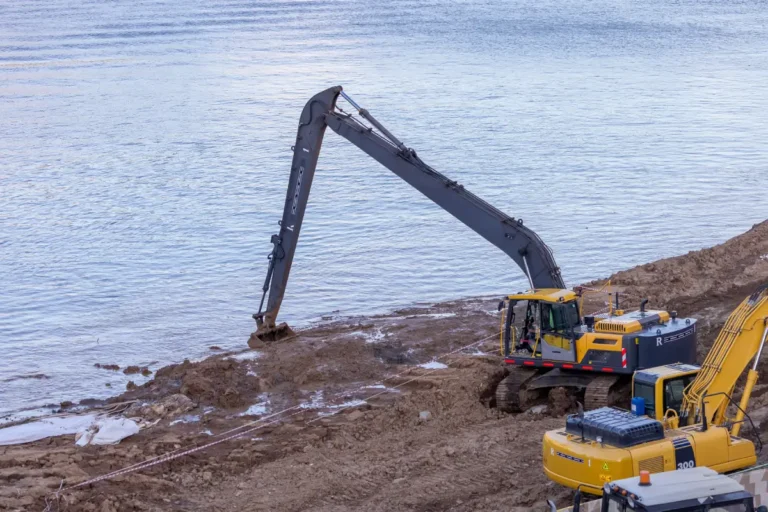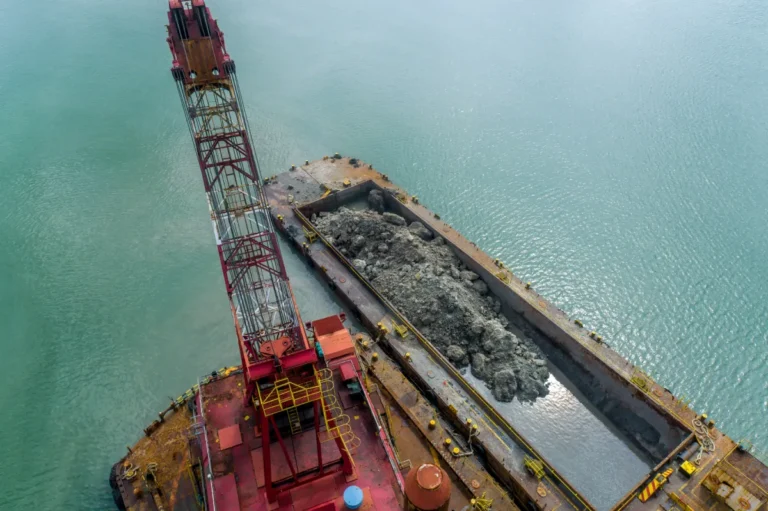Dredge pumps play a critical role in dredging operations, serving as the powerhouse behind material transport in various marine, industrial, and mining applications. These specialized pumps are designed to handle abrasive slurries, sediments, and large solids, ensuring efficient removal and relocation of materials from rivers, lakes, oceans, and excavation sites. Whether used for land reclamation, port maintenance, or mining applications, a well-designed dredge pump is essential for maximizing productivity and reducing operational costs.
The impeller is one of the most crucial components influencing a dredge pump’s performance. As the rotating element responsible for generating the necessary suction and discharge pressure, the impeller directly affects the pump’s efficiency, durability, and ability to handle challenging materials. Proper impeller design ensures optimal hydraulic performance, reducing wear and tear while maintaining a high flow rate.
Impeller selection becomes even more critical in specialized applications like gold dredge pumps and suction dredge pumps. Gold dredge pumps must efficiently process heavy sediments and fine gold particles while minimizing material loss. Meanwhile, suction dredge pumps rely on strong suction power to lift and transport large volumes of slurry over long distances. The right impeller design in these applications ensures consistent performance, minimizes clogging, and extends the pump’s lifespan, ultimately enhancing the overall success of the dredging project.
Understanding Impeller Design in Dredge Pumps

The impeller is the heart of any dredge pump, vitally generating the hydraulic energy needed to transport slurry, sediment, and solids efficiently. It is a rotating component with curved vanes that accelerate the movement of water and slurry through the pump housing. As the impeller spins, it converts mechanical energy from the pump’s motor into kinetic energy, creating the necessary flow and pressure to move materials through pipelines over long distances.
The design of a dredge pump’s impeller determines its ability to handle different materials, maintain high efficiency, and resist wear from abrasive particles. A well-engineered impeller ensures a steady flow rate, reduces turbulence, and minimizes energy consumption, making dredging operations more effective and cost-efficient.
For specialized applications like gold dredge pumps, impeller design is crucial in optimizing the recovery of fine gold particles while maintaining a consistent slurry flow. These pumps require impellers with larger passageways to prevent clogging while efficiently processing heavy sediments. Similarly, suction dredge pumps rely on high suction power to lift dense materials from the seabed or riverbed. The impeller’s shape, size, and number of vanes influence suction strength, ensuring the pump can move large volumes of material without losing efficiency.
Several key factors affect impeller performance in dredge pumps:
- Impeller Type: Open, closed, or semi-open designs impact efficiency and durability in abrasive environments.
- Material Composition: High-chrome alloys or hardened steel impellers improve resistance to wear and corrosion.
- Size and Vane Configuration: Larger impellers with optimally spaced vanes enhance material movement while reducing blockages.
- Rotation Speed: The impeller’s RPM affects the flow rate and suction capability, which is crucial for suction dredge pumps handling large sediment loads.
Selecting the right impeller design ensures a dredge pump operates at peak performance, whether in mining, construction, or environmental dredging projects.
Types of Impellers Used in Dredge Pumps
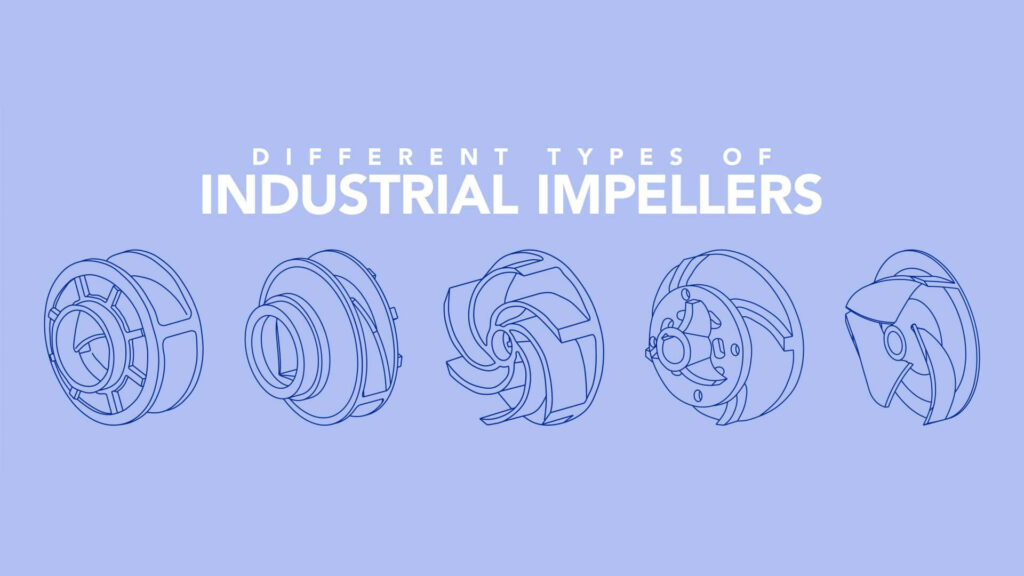
Impeller design plays a crucial role in the efficiency and performance of a dredge pump, impacting how well the pump handles abrasive slurries, sediment, and large solids. There are three primary types of impellers used in dredging applications: open, closed, and semi-open impellers. Each type has distinct advantages depending on the specific dredging conditions, whether for large-scale excavation, fine material recovery in a gold dredge pump, or high-suction operations in a suction dredge pump.
Open Impellers
Structure and Benefits
Open impellers consist of a central hub with vanes attached but no outer cover or shroud. This design allows for a more straightforward and lightweight construction, reducing manufacturing and maintenance costs. Open impellers offer high efficiency in handling large solids and minimize clogging, making them ideal for heavy-duty dredging operations.
Best Applications in Dredging Operations
- Suitable for suction dredge pumps where unrestricted flow is necessary to move large debris and sediments.
- Commonly used in gold dredge pumps, where they help maintain consistent slurry movement without trapping valuable particles.
- Preferred in applications requiring frequent impeller inspections or replacements due to wear.
Closed Impellers
Advantages in Efficiency and Wear Resistance
Closed impellers feature a fully enclosed design with front and back shrouds surrounding the vanes. This structure significantly improves hydraulic efficiency by reducing energy loss and turbulence within the pump. Additionally, the enclosed design offers better wear resistance, making closed impellers ideal for prolonged operations in harsh dredging environments.
When to Use Closed Impellers for Maximum Performance
- Best suited for operations where maximizing energy efficiency is crucial, such as long-distance dredging projects.
- The enclosed design is ideal for gold dredge pumps processing fine sediments. It minimizes slurry dilution and ensures continuous flow.
- Recommended for high-pressure dredge pump applications where maintaining consistent performance over time is essential.
Semi-Open Impellers
Balancing Efficiency and Durability
Semi-open impellers are a compromise between open and closed designs. They consist of vanes with a partial shroud covering one side, offering a balance between efficiency and the ability to handle solids without excessive wear. This design reduces clogging while still providing better structural integrity than open impellers.
Suitability for Handling Abrasive Materials and Large Solids
- Frequently used in suction dredge pumps, as they combine strong suction capability with effective solid-handling performance.
- Ideal for medium- to heavy-duty dredge pump applications where a combination of wear resistance and efficiency is needed.
- Suitable for gold dredge pumps operating in mixed sediment conditions, allowing for better recovery while handling variable material sizes.
Choosing the right impeller type ensures optimal dredge pump performance, reduces energy costs, improves durability, and maximizes material throughput. Whether for large-scale excavation, mining, or environmental dredging, selecting the proper impeller design directly impacts the pump’s efficiency and longevity.
Impeller Material Considerations
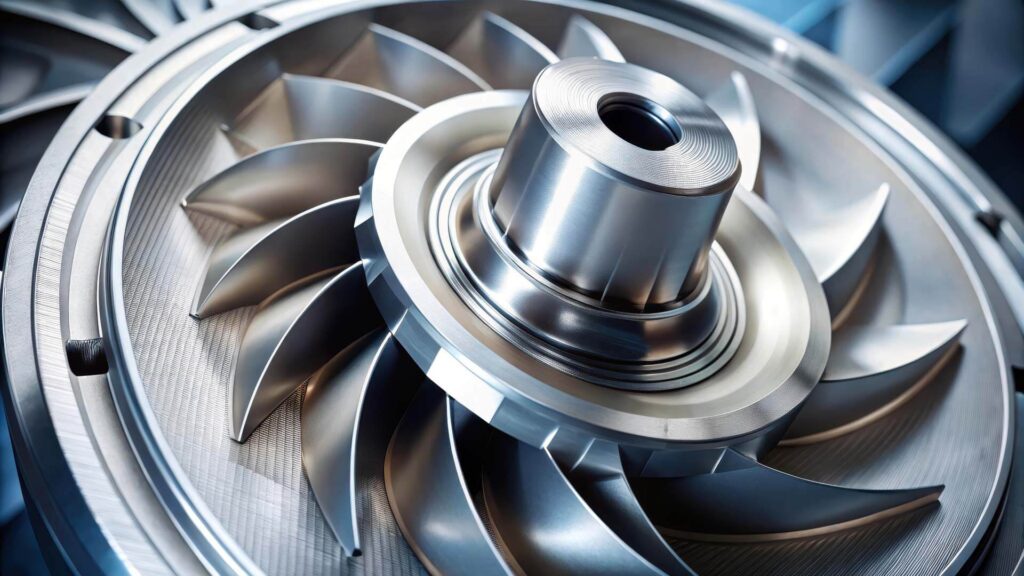
The material of an impeller plays a crucial role in the performance, durability, and efficiency of a dredge pump. Since dredging operations involve handling abrasive slurries, coarse sediments, and sometimes corrosive materials, selecting the right impeller material is essential for minimizing wear and maximizing operational longevity. Different dredging applications, such as gold dredge pumps and suction dredge pumps, require impellers made from materials that can withstand harsh conditions while maintaining high efficiency.
Importance of Selecting the Right Material Based on Dredging Conditions
The dredging environment dictates the type of material best suited for an impeller. For example:
- Highly abrasive conditions (e.g., sand, gravel, and mining operations) require materials with superior wear resistance to prevent premature failure.
- Corrosive environments (e.g., saltwater dredging) demand materials resistant to rust and chemical degradation.
- High-pressure operations, such as deep-water dredging, require impellers with strong structural integrity to withstand intense hydraulic forces.
Selecting an appropriate material helps ensure consistent performance, reduce maintenance costs, and extend the dredge pump’s lifespan.
Common Materials Used in Dredge Pump Impellers
1. High-Chrome Alloys
High-chrome alloys are among the most popular choices for dredge pump impellers due to their exceptional wear resistance and hardness. These materials contain a high percentage of chromium, which enhances their ability to withstand the abrasive forces of sand, rocks, and slurry.
Advantages:
- Excellent resistance to erosion and wear, making them ideal for gold dredge pumps and mining applications.
- Prolonged lifespan in high-solid-content dredging environments.
- Reduced maintenance frequency compared to softer metals.
2. Stainless Steel
Stainless steel impellers are commonly used in suction dredge pumps and applications involving saltwater or corrosive slurries. This material is highly resistant to rust and chemical degradation, making it a preferred choice for marine dredging and industrial applications.
Advantages:
- Superior corrosion resistance, making it ideal for saltwater dredging.
- High durability in environments with both abrasive and corrosive elements.
- Good balance between strength and efficiency for long-term performance.
3. Hardened Iron
Hardened iron impellers are designed for extreme-duty dredging applications that require both abrasion and impact resistance. They are often used in dredge pumps that handle coarse sediments, boulders, and high-impact slurry.
Advantages:
- Highly durable for tough dredging conditions with large solids.
- Cost-effective option for heavy-duty dredging operations.
- Resistant to cracking and breakage under high-impact forces.
How Impeller Material Affects Wear Resistance, Efficiency, and Maintenance
The choice of impeller material significantly influences the overall efficiency and upkeep of a dredge pump:
- Wear Resistance: High-chrome alloys and hardened iron offer superior durability in abrasive conditions, reducing frequent part replacements.
- Efficiency: Materials with smoother surfaces, such as stainless steel, improve hydraulic efficiency by reducing turbulence and friction loss.
- Maintenance Needs: Corrosion-resistant materials, like stainless steel, extend maintenance intervals by preventing rust buildup, while high-chrome alloys minimize impeller degradation in high-abrasion environments.
By selecting the right impeller material, operators can optimize the performance of gold and suction dredge pumps, reduce downtime, and ensure long-lasting operation in challenging dredging conditions.
Impact of Impeller Design on Performance Metrics
The impeller is one of the most critical components in a dredge pump, directly influencing its efficiency, suction power, solid-handling capability, and overall energy consumption. A well-designed impeller ensures smooth slurry movement, reduces wear and tear, and optimizes fuel efficiency. In specialized applications such as gold dredge pumps and suction dredge pumps, impeller design plays an even more significant role in maximizing performance while minimizing operational costs.
Flow Rate and Efficiency
The shape and size of an impeller determine how effectively a dredge pump moves water and slurry through the system. Impellers with a larger diameter and properly curved vanes generate higher flow rates, allowing for more material transport in less time. Additionally, the number of vanes and their configuration affect turbulence and hydraulic efficiency.
Key factors influencing flow rate and efficiency:
- Impeller Diameter: Larger impellers create higher pressure and greater discharge capacity.
- Vane Curvature: Properly angled vanes reduce turbulence and improve energy transfer from the motor to the slurry.
- Number of Vanes: More vanes increase efficiency in handling fine slurry, while fewer vanes are better for handling larger solids.
For gold dredge pumps, maintaining a consistent flow rate is essential to prevent material loss and ensure that fine gold particles are properly transported through the system.
Suction Capability in Suction Dredge Pumps
The effectiveness of a suction dredge pump depends heavily on its ability to generate and maintain strong suction power. Impeller design plays a critical role in achieving this by controlling how water and slurry are drawn into the pump.
How impeller design enhances suction capability:
- High-Efficiency Vanes: Optimized vanes increase suction force, ensuring material is lifted effectively from the seabed or riverbed.
- Clearance and Tolerance: Minimal clearance between the impeller and pump casing helps maintain suction pressure.
- Impeller Speed: Faster rotation improves suction but must be balanced to prevent cavitation and excessive wear.
A well-designed impeller in a suction dredge pump ensures that heavy sediments and materials can be lifted without interruptions, maximizing dredging efficiency.
Handling of Solids in Gold Dredge Pumps
One of the primary challenges in gold dredge pumps is moving coarse sediments, rocks, and other solid materials without clogging or excessive wear. Impeller design directly influences how effectively solids are processed and transported through the pump.
Critical factors for solid-handling performance:
- Impeller Clearances: Larger clearances allow for the passage of bigger solid particles, reducing the risk of clogging.
- Passage Size: Wide vane passages improve solid-handling capability, preventing material buildup.
- Material Composition: Wear-resistant impellers (e.g., high-chrome alloys) extend the pump’s lifespan when handling abrasive materials.
For gold dredge pumps, efficient solid handling is vital to prevent the loss of valuable materials and ensure continuous operation in high-sediment environments.
Energy Consumption and Fuel Efficiency
An optimized impeller design reduces power demand, making the dredge pump more energy-efficient and cost-effective. Poorly designed impellers increase hydraulic losses, requiring more fuel or electricity to achieve the desired performance.
How impeller design affects energy efficiency:
- Hydrodynamic Efficiency: Well-designed vanes minimize resistance and energy waste.
- Reduced Friction Losses: Smooth impeller surfaces and optimized vane angles lower turbulence and pressure drops.
- Balanced Load Distribution: A properly engineered impeller reduces unnecessary strain on the motor, preventing excessive power draw.
Fuel efficiency is critical in applications like suction dredge pumps, as dredging operations often run continuously for extended periods. Choosing an impeller that optimizes performance while reducing power consumption leads to significant long-term cost savings.
By selecting the right impeller design, operators can enhance dredge pump efficiency, improve material handling, and lower operational expenses, ensuring smooth and effective dredging performance.
Common Challenges in Impeller Design and How to Overcome Them
The impeller is the driving force behind a dredge pump, but harsh dredging conditions often challenge its efficiency and longevity. Factors such as abrasive slurries, cavitation, and improper material selection can lead to performance issues, increased maintenance costs, and equipment failure. Whether operating a gold dredge pump or a suction dredge pump, overcoming these challenges is crucial to maintaining efficiency and reducing downtime.
Wear and Erosion in Abrasive Dredging Environments
Dredging operations often involve handling highly abrasive materials such as sand, gravel, and rock. Over time, this constant exposure leads to impeller wear, reducing pump efficiency and increasing the likelihood of costly repairs or replacements.
Solutions to minimize wear and erosion:
- Use High-Resistance Materials: Opt for impellers made from high-chrome alloys, hardened iron, or specialized composites designed for high-abrasion environments.
- Optimize Impeller Design: Larger clearances and properly contoured vanes help reduce localized wear by minimizing high-impact areas.
- Implement Protective Coatings: Advanced wear-resistant coatings can be applied to impeller surfaces to extend lifespan and improve durability in harsh dredging conditions.
For gold dredge pumps, excessive wear can lead to inefficient gold recovery, as eroded impellers may not generate the necessary slurry velocity for effective material transport.
Cavitation and Its Impact on Dredge Pump Longevity
Cavitation occurs when vapor bubbles form in low-pressure areas within the pump and collapse violently, causing damage to the impeller and other internal components. This phenomenon reduces the efficiency of a dredge pump and can lead to premature failure.
Ways to prevent cavitation:
- Optimize Suction Design: Proper inlet conditions, including adequate submergence depth and flow velocity, help prevent pressure drops that cause cavitation.
- Use the Right Impeller Size and Speed: Running an impeller too fast or using an improperly sized impeller can create excessive pressure variations, leading to cavitation.
- Choose a Cavitation-Resistant Material: Stainless steel and high-chrome alloys offer better resistance to cavitation damage, extending the pump’s lifespan.
In suction dredge pumps, cavitation can severely impact suction efficiency, leading to inconsistent material pickup and potential operational shutdowns. Addressing this issue ensures continuous and efficient dredging performance.
Balancing Performance and Maintenance Costs with the Right Impeller Selection
Selecting the wrong impeller type or material can increase maintenance costs and reduce overall efficiency. Operators must find the right balance between performance and durability to achieve cost-effective dredging operations.
Best practices for optimizing impeller selection:
- Match the Impeller to the Dredging Environment: When choosing between open, closed, or semi-open impellers, consider the specific materials being dredged (e.g., fine sediments vs. coarse solids).
- Assess Lifecycle Costs: Although investing in a high-quality impeller may have a higher initial cost, it can significantly reduce long-term maintenance and downtime expenses.
- Regular Inspections and Maintenance: Routine checks and preventive maintenance help detect wear patterns early, allowing for timely adjustments or replacements before significant failures occur.
For gold dredge pumps, impeller efficiency directly impacts material recovery rates, while in suction dredge pumps, proper impeller selection ensures sustained high suction power for effective sediment transport.
By addressing these common impeller challenges, dredging operators can cost-effectively improve pump reliability, extend equipment life, and cost-effectively optimize dredging performance.
Choosing the Right Impeller for Your Dredge Pump
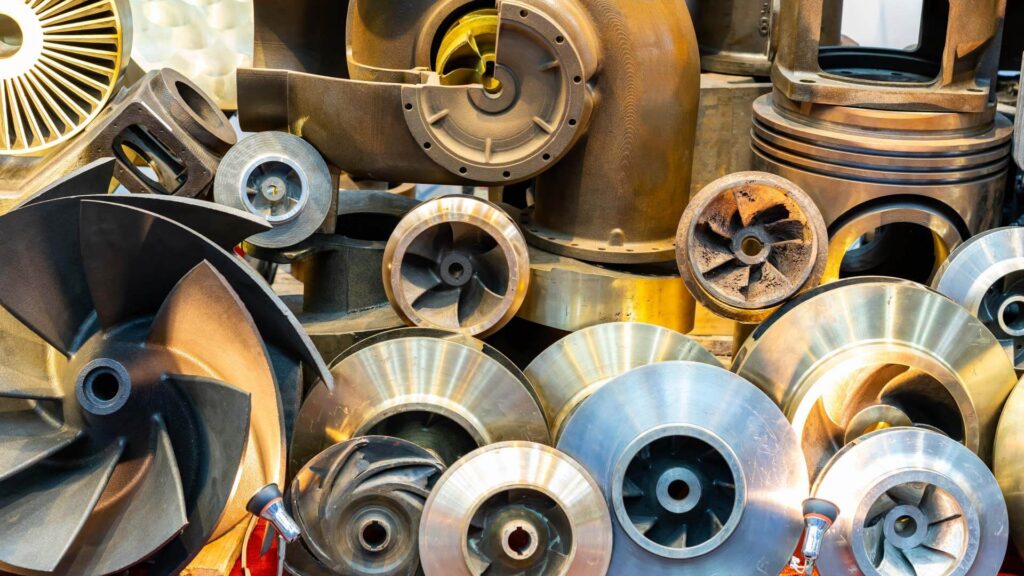
Selecting the right impeller for a dredge pump is critical to ensuring efficient material transport, reducing wear, and optimizing operational costs. Impeller design directly impacts the pump’s ability to handle various dredging conditions, whether in marine, industrial, or mining applications. For gold dredge pumps, the right impeller effectively recovers fine gold particles, while in suction dredge pumps, it maximizes suction power and prevents blockages. Considering key factors such as the dredging environment, material type, and performance requirements is essential for making an informed selection.
Factors to Consider When Selecting an Impeller
1. Dredging Environment (River, Ocean, Mining, Construction)
Different dredging environments require impellers with specific designs to handle unique challenges.
- River and Lake Dredging: Requires impellers with strong suction capabilities to handle fine sediments and organic materials.
- Ocean and Marine Dredging: Corrosion-resistant materials like stainless steel or high-chrome alloys are essential due to saltwater exposure.
- Mining Operations (Gold Dredging): Gold dredge pumps need impellers with larger passageways to process heavy slurries and ensure fine gold recovery.
- Construction and Port Maintenance: Heavy-duty impellers that can withstand gravel, debris, and high-impact loads are crucial.
2. Type of Material Being Dredged (Fine Sediments vs. Coarse Rocks)
The composition and size of dredged material influence impeller choice.
- Fine Sediments (Silt, Clay, Sand): A high-efficiency impeller with a larger vane count minimizes turbulence and optimizes slurry transport.
- Coarse Solids (Gravel, Rocks, Debris): Open or semi-open impellers with wider passageways prevent clogging and improve solid-handling capabilities.
- Heavy Mineral Processing (Gold Dredging): Gold dredge pumps require wear-resistant impellers to handle abrasive slurries while maintaining consistent recovery rates.
3. Required Flow Rate and Pressure
The impeller’s diameter, vane design, and speed directly affect the flow rate and discharge pressure of a dredge pump.
- High-flow, Low-Pressure Pumps are best suited for applications where large volumes of slurry need to be moved over short distances.
- Low Flow, High Pressure: Ideal for long-distance dredging projects, where material must be transported through extended pipelines.
- Balanced Performance for Gold and Suction Dredge Pumps: Gold dredge pumps benefit from impellers that ensure smooth slurry movement. In contrast, suction dredge pumps require strong suction power to lift material efficiently.
How Upgrading Impeller Design Can Improve Existing Dredge Operations
Upgrading to a more efficient impeller can significantly enhance the performance and longevity of a dredge pump.
- Increased Efficiency: Optimized vane design reduces hydraulic losses, improving overall energy savings.
- Extended Equipment Lifespan: Wear-resistant materials minimize degradation, lowering maintenance costs.
- Enhanced Material Handling: A properly selected impeller prevents clogging, ensuring uninterrupted dredging operations.
By carefully considering these factors, operators can optimize the performance of their gold dredge pump or suction dredge pump, leading to more efficient and cost-effective dredging projects.
Conclusion
Impeller design is a fundamental factor in the overall performance and efficiency of a dredge pump. From flow rate and suction power to wear resistance and energy consumption, the right impeller can significantly impact operational success. Whether using a gold dredge pump for fine mineral recovery or a suction dredge pump for large-scale sediment removal, selecting the correct impeller type and material ensures consistent performance, reduces maintenance, and extends equipment lifespan. By understanding the role of impeller shape, vane configuration, and material composition, dredging operators can make informed decisions that enhance efficiency while minimizing downtime and costs.
Upgrading impeller design is one of the most effective ways to optimize dredging operations. A properly selected impeller improves slurry movement and solid-handling capabilities, lowers energy consumption, and extends pump longevity. Investing in high-quality, wear-resistant impellers tailored to specific dredging conditions leads to greater productivity and long-term cost savings. Whether in mining, marine dredging, or construction, choosing the right impeller for a dredge pump ensures peak performance, reliability, and maximum return on investment.




